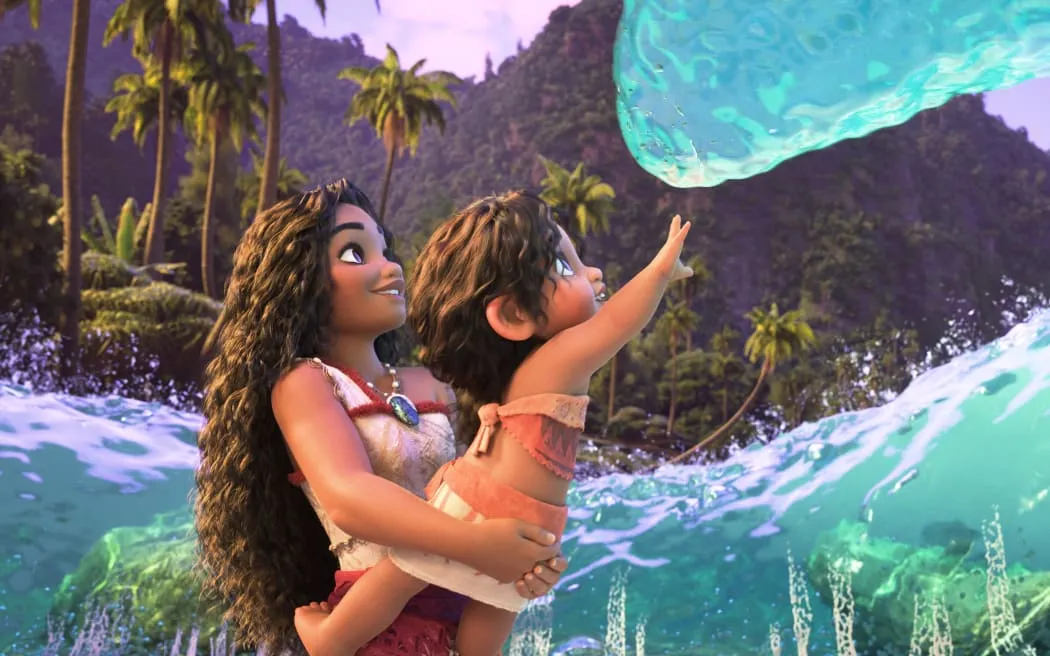The Magic of Moana 2: A Film that Embodies the Spirit of Te Reo
The release of Moana 2, with its simultaneous premiere in both English and te reo Māori, marks a significant milestone in the world of New Zealand cinema. This latest installment in the beloved franchise not only promises to enchant audiences but also serves as a powerful symbol of the growing recognition and importance of te reo Māori.
The Power of Simultaneous Premiere
One of the greatest strengths of Moana 2 lies in its simultaneous premiere in both English and te reo versions. This move ensures that many tamariki Māori will hear the film for the first time in their own language, providing a unique opportunity for them to connect with the story on a deeper level.
According to Jaedyn Randell, the lead voice actor playing Moana, “That’s all they’ll ever know, and I think that’s really exciting.” This sentiment is echoed by Rutene Spooner, who voices the new character Kele, stating, “This could be the first and only version of Moana my daughter sees. She doesn’t have to see the English version and then see the translation.”
A Perfectly Imperfect Film
While Moana 2 is not a perfect film, it has its moments of magic. The chemistry between Randell and Piripi Taylor as Moana and Maui respectively is undeniable, and the supporting cast injects plenty of fun into the film.
However, the villains (or nanakia to use the Māori term) don’t really do much, and the waiata may not be as memorable as those in the first film. Nevertheless, Randell gives it her absolute all, showcasing her talents recently gained on The Voice Australia.
The Importance of Representation
Moana 2 represents a significant step forward for te reo Māori representation in cinema. For years, Māori language films have struggled to find an audience, with many screenings showing significantly fewer English-speaking audiences than their te reo counterparts.
Director and producer Tweedie Waititi reinforces this message: “We want [tamariki] to whakamāori the world. If it’s not in Māori, then translate it. If it’s not in Māori, reimagine it.” The journey for Matewa Media, who brought the te reo version of Moana 2 to life, has been a long one, with adaptations of other Disney films following since the original Moana was released in te reo.
A New Era for Te Reo
As the film industry begins to recognize the importance of te reo Māori, it’s clear that a new era is dawning. The biggest challenge will be proving to theaters that there is an audience for Māori language films, but with Moana 2 leading the charge, it’s possible that this hurdle can soon be overcome.
A quick look at screenings of Moana 2 shows there are five or six English screenings for every one in te reo – a stark reminder of the disparity. However, director and producer Tweedie Waititi remains optimistic: “We want [tamariki] to whakamāori the world… If it’s not in Māori, then translate it.”
Conclusion
Moana 2 is more than just a film – it’s a symbol of the growing recognition and importance of te reo Māori. With its simultaneous premiere in both English and te reo versions, this latest installment in the beloved franchise promises to enchant audiences and inspire a new generation of tamariki to learn their language.
As we move forward into a world where te reo Māori is increasingly recognized as an everyday reality, it’s clear that Moana 2 is just the beginning. With its message of whakamāoritanga (embracing one’s identity) and its commitment to representation, this film serves as a powerful reminder of the magic that can be achieved when we come together to celebrate our shared culture.
Sign up for Ngā Pitopito Kōrero, a daily newsletter curated by our editors and delivered straight to your inbox every weekday.

0 Comments